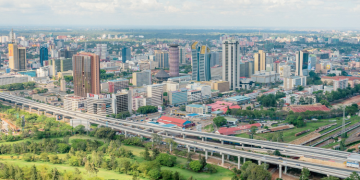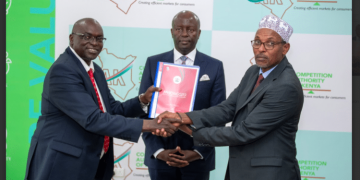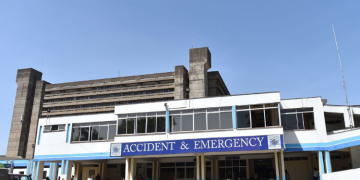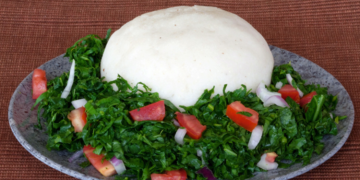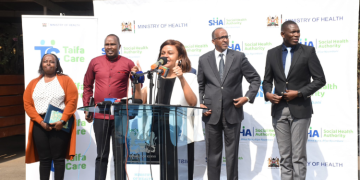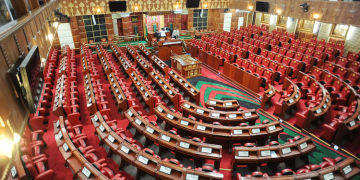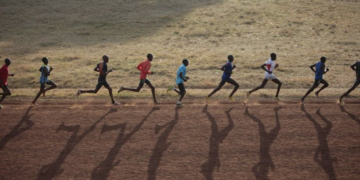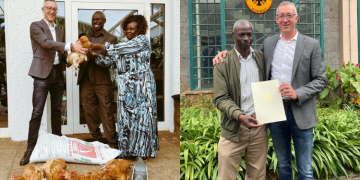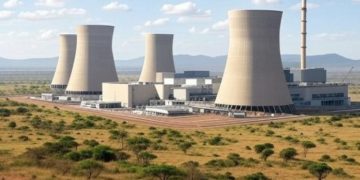The Kenya Meteorological Department (KMD) has explained the reasons behind the current weather conditions being experienced in Nairobi and other parts of the country.
In a statement on August 26, Kenya Met said August normally marks the gradual end of the cold season, especially over Central Kenya, including Nairobi County, and parts of the Southeastern lowlands bordering Nairobi and Central Kenya.
These areas normally experience intermittent cool and cloudy conditions, which may be accompanied by occasional light rains, particularly in the morning.
The western sector of the country, including the Rift Valley and Lake Victoria Basin, typically experiences rainfall during this period, which sometimes extends to the central parts of the country, particularly in Nyandarua County.
Kenya Met said the Coastal region and the Northwestern parts remain generally dry during the month, with occasional rainfall over the Coast, especially in the morning, and occasional rain over the Northwest, especially areas bordering Uganda and Southern Sudan.
The rest of the country, including the Northeast and the Southeastern lowlands, is normally dry with occasional cloudiness over the high ground areas of Marsabit and Taita Taveta counties.
Madden Julianne Oscillation
Kenya Met said the current cold and wet conditions being experienced over Nairobi, Central Kenya, and the western half of the country, respectively, are characteristic of August.
However, the Weatherman noted that there is improvement in rainfall activities over Nairobi, Central Kenya, Northwest, and parts of the Northeastern and Southeastern lowlands.
Kenya Met said the increase has been caused by a band of convective clouds that moves from the west to the east across the global tropical Oceans, referred to as the Madden Julianne Oscillation (MJO).
This system is classified into eight phases and brings rainfall over the country when it moves over the Indian Ocean (phases 2 and 3.). Currently, the MJO is in phase 3 and is expected to remain in that phase for the next couple of days.
Also Read: Weatherman Lists Areas to Receive Rainfall During the Weekend
Kenya Met Reveals Effects of Atlantic and Indian Oceans
Kenya Met said the system that causes rainfall over the western sector of Kenya emanates from the Atlantic Ocean as warm, wet air from the Ocean blows over the western half of the country and is enhanced by local effects from Lake Victoria.
According to the Weatherman, when the Atlantic Ocean is cooler than the Indian Ocean, the pressure gradient between these two oceans pulls the rain causing system farther eastwards to the Central parts, including Nairobi, leading to enhanced rainfall over these areas during the June to August season.
The Atlantic Ocean has been cooler than the Indian Ocean since the June to August season started, hence the occasional rainfall that has been experienced in the months of June, July and August over some parts of Central including Nairobi.
Additionally, Kenya Met said the pressure gradient and MJO have led to the wetter than usual weather conditions currently being experienced over the Western half of the country, including the Northwestern parts, the Central region, including Nairobi County, parts of the Northeastern (Marsabit and Isiolo counties) and parts of the Southeastern lowlands, especially those bordering Nairobi County.
Kenya Met said the current rainfall is expected to continue, especially over the Western half of the country, including the Northwestern region, parts of Marsabit county, and parts of Central Kenya.
Also Read: Kenya Met Explains Why July is Usually Cold in Nairobi and Several Counties
7-Day Weather Outlook
Kenya also published the weekly weather forecast for the period between August 26 and September 1, 2025.
In the forecast, Kenya Met said rainfall is expected to continue across the Lake Victoria Basin, Rift Valley, Western, and North-western Kenya. However, intensity and coverage are gradually easing.
Cool and Cloudy Conditions are expected intermittently across parts of the Central Highlands, Western Kenya, South-eastern Lowlands, and the Rift Valley.
Expect highs above 30 °C in much of North-eastern and North-western Kenya during the day.
However, there will be cold nights with minimum temperatures dropping below 10 °C in parts of the Central Highlands, Central Rift Valley, and near Mt. Kilimanjaro.
Southerly to south-easterly winds, exceeding 25 knots (12.86 m/s), are expected over the Coast (and Kenya’s territorial waters), South-eastern Lowlands, North-eastern, and North-western Kenya.
Follow our WhatsApp Channel and X Account for real-time news updates.




















